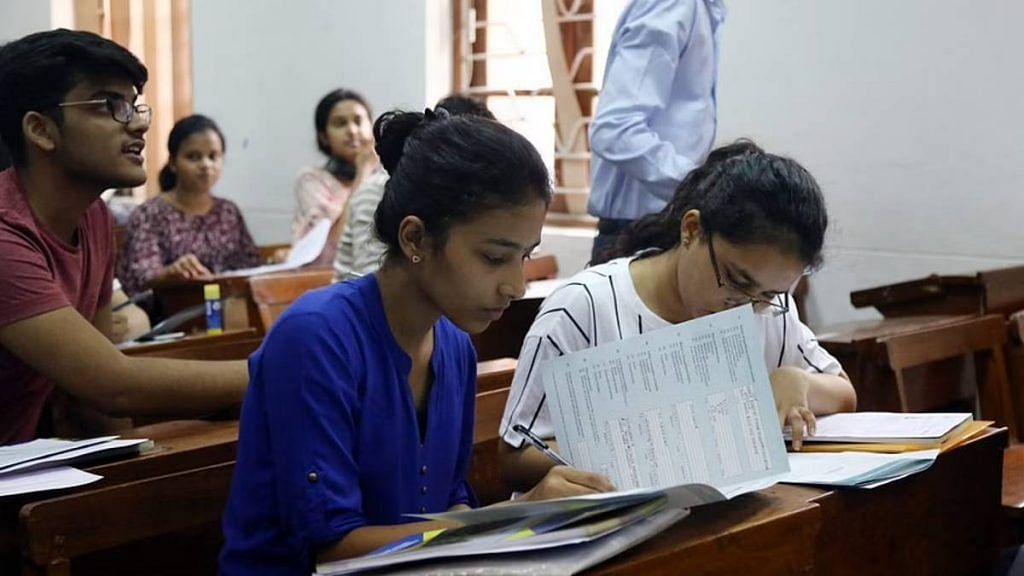The potential of digital interventions in the field of education in India is immense: the market for online education has grown four times since 2019 to $3 billion. A KPMG assessment showed that India is the second largest market for online education after the US. With conducive policies and initiatives of the Government of India, such as the National Education Policy (NEP) 2020 and over 5000 EdTech start-ups across the learning lifecycle, the current education environment is potent for digital transformation.
Alongside this, learning outcomes among schoolchildren show significant scope for improvement. The National Achievement Survey (NAS) of 2021 reported an average learning level of 59% in grade 3, 49% in grade 5, 42% in grade 8 and 36% in grade 10. This indicates a decline in learning levels with an increase in grade level and has far-reaching implications for young Indians’ readiness for the 21st-century workplace and India’s preparedness for the Fourth Industrial Revolution.
Furthermore, the COVID-19 pandemic has highlighted the digital divide caused by disparate access to, and affordability of, technology infrastructure (such as internet connectivity and electricity) and devices (such as computers and mobile devices). This divide varies across geographies, demographics and communities. Additionally, students with disabilities face unique challenges due to the lack of peer support, lower concentration levels and the need for better parental support.
Enhancing learning and reducing inequities
While recognizing the huge potential of technology for enhancing learning, as well as the need to reduce inequities in educational access for all girls and boys, the Education 4.0 India initiative utilizes digital and other technologies to address learning gaps and make education accessible to all.
A joint effort between the World Economic Forum, UNICEF and YuWaah (Generation Unlimited in India) proposes solutions that align with, and augment and amplify, India’s National Education Policy (NEP) 2020 and the National Digital Education Architecture of 2021.
India’s NEP 2020 aims to improve the delivery of quality education for all learners, including through digital means. From revamping the educational structure to creating a robust digital learning system, the NEP 2020 is aligned with the goals of 21st-century education. It emphasizes the development of the creative potential of each child.
Keys areas that require intervention
The report identifies four focus areas for interventions: foundational numeracy and literacy (FLN), teachers’ capacity building, school-to-work transition and connecting the unconnected. The interventions are categorised under five building blocks, namely: curriculum, content, capacity, community and digital.
Building blocks of interventions. Source: Education 4.0 India report.
1. Foundational literacy and numeracy
For instance, in FLN, a major gap identified is the lack of “byte-sized” content in early learning that can ignite a child’s interest, as well as engage parents who may not be educated.
Storytelling, read-aloud and interactive content, flip books, and the use of digital tools can address these challenges. FLN solutions are centred around the following criteria: the capability of the solution to engage the home environment and the relevant actors (parents, caregivers and community); the adaptability of the solution; whether the solution is multi-modal in nature (hybrid or phygital) so as to reach parents and communities in the remotest and most resource-challenged locations.
2. Teachers’ capacity building
Enhancing teachers’ capacity to deliver education in newer formats is essential, as is their buy-in and involvement in creating and providing tech-enabled curricula. To this end, the report suggests ways to strengthen teachers’ capacity building – for instance, by improving the quality of teachers’ training, linking training with career progression, and involving teachers in designing a holistic teachers’ capacity building programme.
3. School-to-work transition
The third priority area, school-to-work transition, focuses on making students job-ready in a rapidly evolving employment landscape. Nearly 85% of Indian schools have yet to implement vocational courses as part of their curriculum. This report suggests interventions using digital and hybrid models to upskill students to find a good fit with available and emerging jobs.
4. Connecting the unconnected
The global pandemic has not only made digital learning central to teaching worldwide, but it has also widened the digital divide, leaving those without devices and internet connections further behind. According to the Unified District Information System for Education (UDISE) 2020-2021 survey, only around 41.3% of schools have access to computers, and 24.5% had access to the internet in 2020-2021.
For the fourth focus area, connecting the unconnected, this report categorizes schools based on their access to digital infrastructure. It suggests interventions to enable schools at each level to get better connected.
Transforming the education sector
The Education 4.0 India initiative builds on efforts by the central and state governments and leverages their interventions. The interventions recommended by the initiative can create tremendous impact – from making education more accessible and inclusive to reducing dropout rates and improving learning outcomes by using more adaptive learning systems and community engagement.
The report presents a roadmap to enhance India’s school education ecosystem and gives out a call to action to all stakeholders in the edtech space to come together to transform the sector.
This article was originally published in the World Economic Forum.
Also read: Hindi medium in colleges, govt, recruitment exams…and UN — what Shah-led language panel wants
